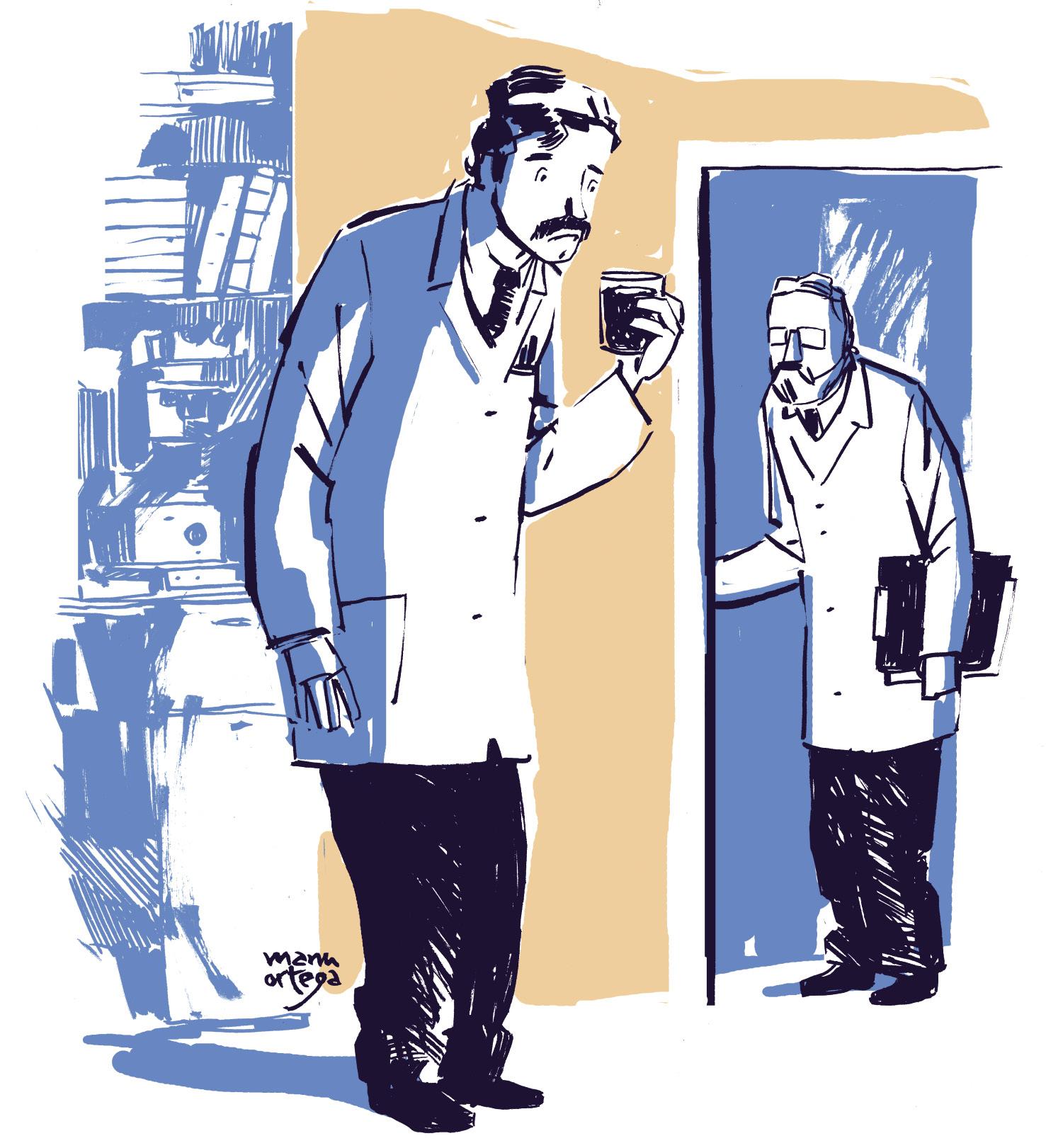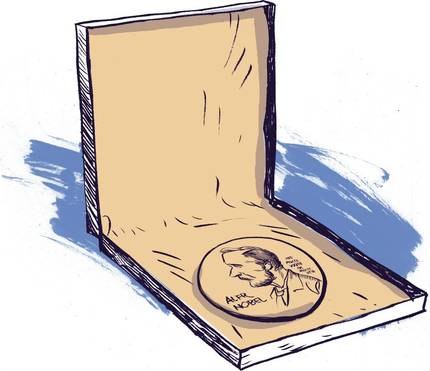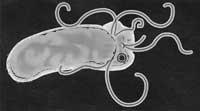Drinking Bacteria, Winning the Novel
2018/06/01 Etxebeste Aduriz, Egoitz - Elhuyar Zientzia Iturria: Elhuyar aldizkaria

He picked some bacteria from the petri dish and mixed them with a mild meat extract in a flask. He took the flask to his mouth and swallowed the trench in a single drink. It was not a sweet drink, but he did not complain.
After three days he begins to feel incandescent, he forgets his breath. At five days he starts vomiting, feels totally sick, exhausted. I knew the antibiotic would kill the bacteria in my stomach, but I would wait a few more days. “I wanted to have an ulcer; I wanted my research to go ahead by developing a bloody ulcer,” I would confess.
At first, Barry Marshall's only wish was to be a doctor. It was good to care for the sick and I always wanted to know the reason for the symptoms. But gradually he realized that it was more difficult than he thought: “At medical school, you will most likely learn to treat all patients with diagnosis and disease. But when you go out into the real world you realize that in most patients who enter through your door you have no trace behind the symptoms.”
In 1979 he entered the Royal Perth Hospital (Perth, Australia) as an internal physician specializing in cardiology and open heart surgery. In 1981 he devoted six months to the gastroenterology section, forming part of the formation. When asked what research project he could do, his boss showed him a letter from pathologist Robin Warren: “We have found that twenty patients have bacteria in the stomach, where they should not be because there is too much acid. Is there someone in gastroenterology who wants to help me investigate what happens to these patients?” Marshall found it exciting.
It was known that the sterile was too acidic for microorganisms. But Warren discovered bacteria in stomach biopsies. They all had a helical shape. And they appeared in patients with gastritis, ulcers, or stomach cancer.
To investigate it, they took stomach samples to a hundred patients and decided to try to grow in the culture. The first 33 samples obtained nothing. But on Tuesday of Easter Week, the cropping technician called Marshall agitated. When he went to the laboratory he taught him the cultures of samples 34 and 35. They were full.
Then Marshall discovered what sparrow they had. All previous crops were thrown in two days. So it was done with all the other cults, if in two days there was nothing to grow, it was concluded that there was nothing. In that period, however, the cultivation was done on Holy Thursday and left until Tuesday. They knew that these bacteria need more time.
Subsequently, samples of 13 patients managed to grow the bacteria. In all cases appeared the same and only bacteria that would later be called Helicobacter pylori. And those 13 patients had stomach ulcers or duodenum. Given all previous biopsies, it was clear that whenever the bacteria appeared there was inflammation, ulcers or stomach cancer. In addition, in some cases they already saw that if treated with antibiotic the ulcer was cured. Warren and Marshall began to deduce that H. pylori bacteria could be the cause of these diseases.
Marshall presented these results at the annual meeting of the Perth College of Physicians. He only received criticism and absolute skepticism. “For gastroenterologists to say that a microorganism could produce ulcers was like saying that the Earth was flat.” The Australian Society of Gastroenterology rejected the article sent by Marshall. Marshall and Warren managed to publish a letter in The Lancet magazine, but no one listened to them.
At that time stomach and duodenum ulcers were considered as a consequence of stress and inadequate life. In these circumstances it was considered that the stomach generated an excess of acid that caused ulcers. It was treated with antacids but could not be cured.
Marshall began treating several patients with antibiotics, obtaining excellent results. But he had big problems publishing. They barely obtained funding for research.
They needed stronger evidence. Somehow they had to prove that these bacteria caused the disease. They tried it with mice, rats and pigs, but they did not succeed (only the primate infecta H. pylori). And they were forbidden to test people.
Marshall could no longer: “I saw people almost dying with bloody ulcers and I knew all they needed was antibiotics. A patient came in the blood taking antacids and the next day you saw the empty bed. I asked, “Where is it?” and they answered me while I was in the operating room, removing my stomach.”
In the summer of 1984 he asked his boss for a favor. “Barry, I’m not going to ask you why I’m doing this,” he said, while he was doing endoscopy. Marshall thus confirmed the good state of the stomach. Once the bacteria of a patient with gastritis grew up in the laboratory and studied with what antibiotic he could die, he drank those bacteria.
I did not expect any symptoms, I expected to create an ulcer in a couple of years. But immediately he got sick. On the tenth day he did another endoscopy. Everything was full of bacteria.
The following year he published those results. And he also appeared in the newspapers. Gradually they began to take into account the results of Marshall and Warren, although it would take about ten more years of total acceptance. In 2005 he was awarded the Nobel Prize for discovering H. pylo and demonstrating that it causes gastritis and ulcers.
Bibliography
AZAD, M. (2014): “Q&A: Barry Marshall.” Nature
CHARISIUS, H. (2014): “When Scientists Experimental at Themselves: H. pylori and Ulcers”. Scientific American
MARSHALL, G.V. (2006): “Biographical”. The Nobel Prize
SWAN, N. (2008): “Professor Barry Marshall, gastroenterologist”. Australian Academy of Science
WEINTRAUB, P. (2010): “The Doctor Who Drank Infectious Broth, Gave Himself an Ulcer, and Solved a Medical Mystery”. Discover

Gai honi buruzko eduki gehiago
Elhuyarrek garatutako teknologia





